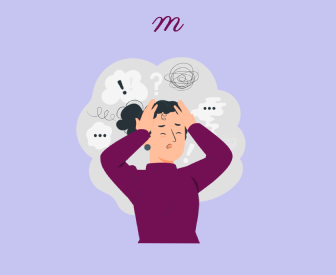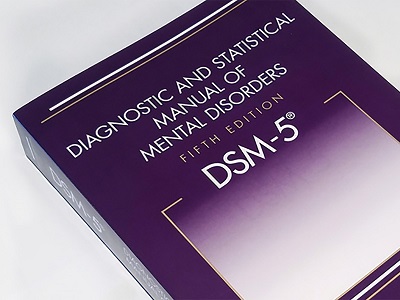Have your progress notes written for you automatically
You may feel confident in your counseling skills, but it is still challenging to remember all the details of the Diagnostic and Statistical Manual-5th Edition (DSM-5). The DSM-5-TR diagnostic codes for different disorders and their symptoms can be overwhelming, especially for those new to the field who need to keep up with code changes—introducing the ultimate pocket guide that aims to distill the manual into an accessible and useful quick reference.
This cheat sheet contains succinct descriptions of the most common diagnoses, accompanying codes, symptoms, and tips. It will be your go-to desk reference for all things DSM-5-TR. Whether you need a quick reference during sessions or while advising colleagues, this guide covers you. By mastering the fundamentals, you can gain confidence in your diagnoses and reduce the time you’d otherwise spend thumbing through the entire manual.
So why wait? Keep reading to get the full breakdown of the DSM’s greatest hits—and start diagnosing like a pro.
The DSM-5-TR’s Intentional Structure
Have you ever considered how this vast collection of diagnostic criteria and classifications came to be? The structure and organization of the DSM-5-TR are intricate and purposeful, designed to aid clinicians in accurate diagnosis while encompassing a wide range of psychiatric conditions.
First, Section I – Introduction provides essential general information about using the manual effectively. It also includes instructions for making diagnoses based on specific criteria outlined throughout.
Next comes Section II – Diagnostic Criteria and Codes, arguably one of the most crucial parts. Here, you’ll find an extensive list of mental disorders classified under 20 distinct categories – from neurodevelopmental disorders to schizophrenia spectrum disorders – each defined by specific symptoms required for diagnosis.
Finally, Section III – Emerging Measures and Models introduces potential alternative models or measures that are still undergoing research but may shape the content of future editions.
Breaking Down Common DSM-5-TR Codes and Diagnoses
Some of the most commonly diagnosed mental illnesses and their ICD-10 codes include:
- Major Depressive Disorder (296.2x-3x)
- Generalized Anxiety Disorder (300.02)
- Posttraumatic Stress Disorder (PTSD) (309.81)
- Bipolar Disorder (296.0x, 296.4x, 296.5x, 296.6x, 296.7)
- Schizophrenia (295. xx)
- Attention-Deficit/Hyperactivity Disorder (314.00, 314.01)
To properly diagnose someone, you must determine if they exhibit the typical symptoms associated with the disorder you’re considering. These symptoms can include a wide range of things, such as changes in mood, behavior, or thought patterns.
Below are some of the most common criteria and symptoms that you may face:
Major Depressive Disorder
- Feeling depressed or sad most of the day, nearly every day.
- Loss of interest in activities once enjoyed.
- Changes in appetite and sleep.
- Difficulty concentrating or making decisions.
- Feelings of worthlessness or guilt.
- Recurrent thoughts of death or suicide.
Generalized Anxiety Disorder
- Excessive anxiety and worry occur most days for at least six months.
- Difficulty controlling the worry.
- At least three of the following symptoms: restlessness, fatigue, difficulty concentrating, irritability, muscle tension, and sleep problems.
Posttraumatic Stress Disorder
- Exposure to actual or threatened death, serious injury, or sexual violence.
- Intrusive symptoms such as distressing memories, dreams, or flashbacks.
- Avoiding reminders of the traumatic event.
- Adverse changes in thoughts and mood, such as distorted cognitions and persistent negative emotional state.
- Changes in arousal and reactivity, including irritable behavior and hypervigilance.
Bipolar Disorder
- Manic episodes: abnormally elevated or irritable mood, increased activity, energy, and impulsiveness. Lasts at least one week.
- Hypomanic episodes: less severe than manic episodes. Lasts at least four days.
- Major depressive episodes: depressed mood, loss of interest in activities, changes in sleep and appetite. Lasts at least two weeks.
- Treatment focuses on mood stabilizers, antipsychotics, and psychotherapy.
Schizophrenia
- Delusions: false beliefs that cannot be changed by reason. Present for a significant portion of time during one month (or less if successfully treated).
- Hallucinations: seeing, hearing, feeling, tasting, or smelling something that does not exist. Lasts approximately one month (or less if successfully treated).
- Disorganized speech: incoherent or irrelevant speech. Present for a considerable duration during one month (or less if successfully treated).
- Grossly disorganized or abnormal motor behavior.
- Negative symptoms: diminished emotional expression, lack of pleasure in everyday life, inability to start and sustain planned activities.
Attention-Deficit/Hyperactivity Disorder
- In attention, such as being easily distracted or making careless mistakes.
- Hyperactivity and impulsivity include fidgeting, inability to remain seated, and interrupting others.
- Symptoms present in multiple settings like school and home.
- The onset of symptoms before age 12.
- Symptoms interfere with or reduce the quality of social, academic, or occupational functioning.
Essential Tips for Enhancing Your Clinical Judgment and Accurately Diagnosing DSM-5-TR Disorders
The DSM-5-TR is a valuable diagnostic tool, but it requires careful application. The key is to identify symptom clusters that match the criteria for a specific disorder. Assessing the duration, severity, and impact on functioning is crucial for the most appropriate diagnosis and treatment. Diagnosing is an ongoing process that requires revisiting and adapting as new information unfolds. However, we all have and will face certain days that stretch forever, leaving us exhausted and overwhelmed. These days, it can be challenging to distinguish between closely related disorders that share several similar characteristics. To overcome this hurdle, here are some valuable tips to help identify even the most subtle differences between these disorders:
Focus on Primary Symptoms
Observe the main symptoms associated with each disorder carefully. The key identifying feature of major depressive disorder is the presence of at least five depressive symptoms for most of the day, almost every day. Alternatively, generalized anxiety disorder is characterized by excessive anxiety and worry.
Consider Comorbidity
It is common for some disorders to occur together, such as major depression and generalized anxiety disorder. However, if a patient shows some symptoms of a comorbid condition, it does not necessarily mean they have the full criteria for that diagnosis. It is crucial to evaluate all the symptoms carefully to determine the primary diagnosis.
Rule Out Other Causes
Ensure that the symptoms your clients are experiencing aren’t caused by any other medical condition or substance use. For instance, if you are experiencing symptoms of inattention, it could be a sign of ADHD, but it could also be due to hyperthyroidism or excessive caffeine intake. Be sure to take the time you need to conduct a thorough evaluation to determine the underlying cause of your symptoms before diagnosing any mental health disorder.
Get a Thorough History
Spend time talking with the client to understand their symptoms, experiences, family history, and life events. Conducting a comprehensive clinical interview will provide insights into the symptoms’ duration, severity, and impact to determine if they meet the diagnostic criteria.
Note Subtle Differences
Some disorders that appear to be similar can have subtle but significant differences. For instance, OCD is characterized by recurring, intrusive thoughts, while an excessive concern with perceived physical flaws defines body dysmorphic disorder. It’s crucial to pay close attention to the diagnostic criteria to differentiate between related disorders accurately.
Use Clinical Judgment
The DSM-5-TR criteria provide a framework, but diagnosis also requires professional expertise and discretion. Consider the subtle nuances of the client’s presentation, vulnerabilities, strengths, and circumstances. Exercise caution to avoid overdiagnosing or applying a diagnosis too rigidly.
Re-Evaluate as Needed
Diagnoses are not permanent. Continue to monitor the client’s symptoms and presentation over time. Adjust or re-diagnose as needed to match the client’s evolving clinical picture. Some disorders may present differently over time or with the progression of treatment.
Consult with Colleagues
Discuss challenging cases with other professionals to get different perspectives and ensure the most appropriate diagnosis. A fresh set of eyes can help identify alternative explanations or highlight aspects of the case that may have been missed. Collaborating leads to improved diagnostic accuracy.
Document Thoroughly
Carefully record the symptoms, experiences, and life events that support the selected diagnosis. Note how the diagnostic criteria are met based on specific examples from the clinical interview and assessment results. Thorough documentation shows the reasoning behind the diagnosis and allows for continuity of care between clinicians.
When in Doubt, Consult the DSM-5-TR
If you are still going back and forth on the proper diagnosis, refer to the complete Dcompletegnostic criteria for assistance. Thorough explanations of each disorder help identify unique characteristics and ensure an exact diagnosis. Consulting the DSM-5-TR is particularly beneficial in complicated cases.
You can also consider making your DSM-5-TR insights actionable and organized with Mentalyc’s HIPAA-compliant note-taking platform. From custom templates to automated documentation, this platform can help you streamline your clinical notes for more efficient, thorough, and compliant record-keeping.
Tips for Utilizing this DSM-5-TR Pocket Guide in Practice
If you’re thinking, “Why would I need something like this?” you’re in the right place. This pocket guide is convenient and comprehensive for therapists at every stage of their careers. It’s worth keeping at hand, sharing it with others, and referring to it often. Whether you’re in training or a veteran, this pocket guide can be invaluable.
Here are some tips to help you make the most of it:
Keep it on Hand
Place this guide on your desk, laptop bag, or clipboard for quick reference with clients. The condensed format makes it easy to flip through categories and disorders during a session.
Use it to Confirm Diagnoses
If you have a hunch about what a client may be experiencing but want to double-check the criteria or code, this guide has you covered.
Refer to it for Treatment Planning
Once you’ve settled on a diagnosis, consult this guide for the typical interventions, therapies, and medications that may be effective.
Share it with Clients and Families
This guide’s straightforward explanations can help clients and their families better understand a diagnosis and what to expect. Offer it as a take-home resource.
Use it to Teach Students
Whether supervising interns or teaching a class, this pocket guide is an excellent learning tool to help students grasp the key elements of various disorders.
FAQs on Using This DSM-5-TR Cheat Sheet for Mental Health
As you start using this guide, you may have some questions. Here are a few of the most common FAQs:
How do I choose between similar diagnoses?
Some disorders share many of the same symptoms, so determining the correct diagnosis can be tricky. The key is to consider symptoms’ duration, frequency, and intensity. Think about the client’s family history and life events as well. The diagnosis that best accounts for the majority and most severe symptoms is typically the right choice.
What if a client meets the criteria for more than one disorder?
Comorbidity, or the presence of two or more disorders at once, is common in mental health. In these cases, determine which symptoms are primary versus secondary. The primary diagnosis should be the one that causes the most impairment or distress. Secondary diagnoses can then be specified as “comorbid with” the primary disorder.
How do I know if a medical issue causes symptoms?
Always rule out potential medical causes of symptoms before diagnosing a mental health disorder. Ask about any recent physical illnesses, injuries, or medication changes. Look for physical indicators like fever, slurred speech, or loss of coordination. If a medical cause is suspected, refer the client to their physician immediately.
How often should diagnoses be revisited?
It’s good practice to re-evaluate diagnoses at least annually or whenever significant life changes occur for the client. Symptoms, and even disorders themselves, can change over time. Regular reassessment ensures the diagnosis remains accurate and treatment plans are current.
What if I still need to figure out the correct diagnosis?
Feel free to consult, conduct additional assessments, or seek a second opinion from a colleague. It’s best to take your time to determine the most accurate diagnosis, especially when first learning the diagnostic process. An incorrect diagnosis can lead to improper treatment, so carefully considering all information is critical.
How do I determine the severity of a disorder?
To determine how severe a condition is, it is crucial to evaluate the number of symptoms, the intensity of those symptoms, and how much the condition has impacted the patient’s ability to function. The condition can be classified as mild, moderate, or severe, depending on these factors. A mild condition is characterized by only a few symptoms and minimal impairment. A moderate condition has some symptoms and some impairment. Finally, a severe condition is marked by numerous symptoms and significant impairment.
What if a client disagrees with the diagnosis?
Be open to the client’s perspective and concerns. Explain the diagnostic process and criteria you used transparently. Reassure the client that a diagnosis is simply a tool to help provide effective care and does not define who they are. Offer to revisit the diagnosis together if the client remains uncomfortable.
Conclusion
Our DSM-5-TR cheat sheet empowers you to save time, avoid mistakes, and offer compassionate care. By providing easy access to diagnoses, codes, symptoms, and valuable tips, this guide helps you utilize it confidently and efficiently. Whether you’re an experienced practitioner or just starting, this tool will simplify the complexities of the DSM-5-TR, freeing you to focus on what truly matters – helping your clients thrive. For even greater productivity, try our AI-powered progress note-writing software, risk-free for 30 days. Tailored to therapists, our templates save you time and help you stay organized to deliver the highest quality care and positively impact people’s lives.
References:
- Buckley, M. R. (2014). Back to Basics: Using the DSM-5 to Benefit Clients. The Professional Counselor, 4(3), 159-165. https://doi.org/10.15241/mrb.4.3.159
- Cherry, K. (2023, March 23).Diagnostic and Statistical Manual (DSM) Overview. Verywell Mind. https://www.verywellmind.com/the-diagnostic-and-statistical-manual-dsm-2795758
- Frances, A. (2013, June 17).14 Tips for the Diagnostic Interview of Mental Disorders. Psych Central. https://psychcentral.com/pro/14-tips-for-the-diagnostic-interview-of-mental-disorders#1
- KM, L. (2022, February 17). Definitive DSM-5 Diagnosis List. Thriveworks. https://thriveworks.com/blog/every-dsm-5-diagnosis/
- Mental illness – Diagnosis and Treatment. (2022, December 13). Mayo Clinic. https://www.mayoclinic.org/diseases-conditions/mental-illness/diagnosis-treatment/drc-20374974
- Peterson, T. J. (2019, October 23).The DSM-5: The Encyclopedia of Mental Disorders. Mental Health Support, Resources & Information | HealthyPlace. https://www.healthyplace.com/other-info/mental-illness-overview/the-dsm-5-the-encyclopedia-of-mental-disorders#:~:text=The%20DSM%2D5%20contains%2020,and%20nearly%20300%20mental%20illnesses
Disclaimer:
All examples of mental health documentation are fictional and for informational purposes only.










